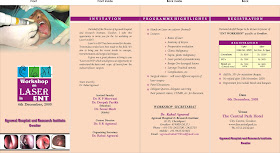10. Crackers are very costly.
9. You are encouraging Child Labour by using crackers.
8. Most of the shops you buy these from, do not adhere to the Excise Dept guidelines.
7. Crackers release a lot of Ultra-violet and Infrared radiation, which are harmful to the eyes and the body parts.
6. Diwali (Deepavali) is a festival of lights, not sound. Crackers can cause deafness.
5. Maximum number of Burn cases are reported in the Diwali season due to the improper use of crackers.
4. Humans might be able to protect themselves, but the crackers have a deep physical and mental impact upon animals.
3. Most crackers do not adhere to the Govt guidelines on Noise pollution and the sound of these crackers is above the permitted levels. In short, many are Illegal.
2. Levels of Air pollution, which are already high in India, reach astronomical levels on Diwali and can be very harmful to the human body.
1. Crackers and Fireworks are the single largest cause of respiratory diseases like Bronchial Asthma, Chronic Bronchitis and other Chronic Obstructive Pulmonary Diseases.
So, hopefully, you would have a fun-filled, beautiful and cracker free Diwali.
HAPPY DEEPAVALI TO ONE AND ALL !!













